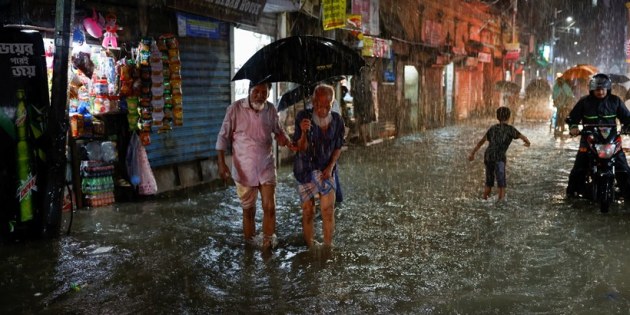Deaths, floods as cyclone Sitrang hits Bangladesh; rain dampens Bengal festivities
Cyclone Sitrang hit Bangladesh on Monday, resulting in at least nine deaths and heavy flooding. The cyclone, however, spared West Bengal, which witnessed heavy rainfall.
 1 / 10
1 / 10Cyclone Sitrang hit Bangladesh on Monday, resulting in at least nine deaths and heavy flooding. (Reuters)
You have exhausted your
monthly limit of free stories.Read more stories for free
with an Express account.Already have an account? Sign InThis story is exclusive to subscribers. Become one now. Use code IE10Already a subscriber? Sign InThis story is exclusive to subscribers. Become one now. Use code IE10This content is exclusive for our subscribers.Subscribe now to get unlimited access to The Indian Express exclusive and premium stories.Already a subscriber? Sign In- 2 / 10
The cyclone, however, spared West Bengal, which witnessed heavy rainfall on the day of Diwali. In this picture, dark clouds hover in the skies above the Ganga river in Kolkata. As a precautionary measure, workers anchor a ferry on the bank of river Ganga, on Monday. (PTI)
- 3 / 10
Soon after it crossed Bangladesh, Sitrang weakened into a deep depression, and as of Tuesday morning, it further weakened into a low pressure area. In picture, people wade through a flooded street in Dhaka. (Reuters)
- 4 / 10
The effects of the cyclone started being felt in the coastal districts of West Bengal since Monday morning. In picture, fishermen park their boats on the bank of the river Ganga, in Kolkata. (PTI)
- 5 / 10
The cyclone crossed the Bangladesh coast late Monday night, causing widespread rain in coastal regions of Bangladesh, and West Bengal. In this picture, people ride rickshaws and motorcycles on a flooded street, following continuous rain in Dhaka on Monday. (Photo: Reuters)
- 6 / 10
While people stocked up for supplies in Bangladesh, in India, fishermen were banned from entering the sea October 23 onwards. (Reuters)
- 7 / 10
Power and telephone links were disrupted and coastal areas in Bangladesh plunged into darkness as the cyclone passed through the country. (Reuters)
- 8 / 10
The India Meteorological Department, meanwhile, warned of squally winds with speeds reaching 40 to 50 kmph gusting to 60 kmph along and off the coast of West Bengal on Tuesday. In photo, commuters wade through flooded streets of Dhaka. (Photo: Reuters)
- 9 / 10
The IMD said the weather in south Bengal districts is likely to improve from forenoon on Tuesday. (Reuters)
- 10 / 10
Widespread moderate to heavy rainfall over Assam, Arunachal Pradesh, Meghalaya, Mizoram and Tripura is also expected on Tuesday. (Reuters)